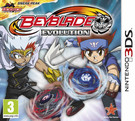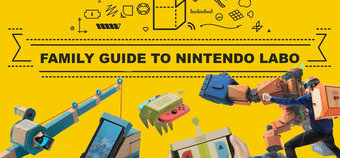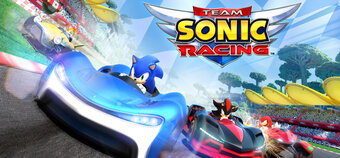While the toy craze may have reached its peak back in the mid 2000's, it seems that Beyblade (essentially a kind of 'extreme spinning tops') has endured thanks to an on-going animated series (the latest, Beyblade: Shogun Steel is still running in Japan) and the simple appeal of pulling off a perfect spin. Beyblade Evolution for the 3DS aims to shrink the spinning phenomenon down onto handhelds, bringing the key themes of battling and customising Beyblades while trying to win the ultimate Beyblade championship into a digital format. As a tie-in with the anime series, there's plenty of familiar faces for fans to encounter and battle with along the way, and there's plenty of scope for dedicated bladers to create their ultimate top. All of which sounds great, but let's take a look at how well the game plays and see if it's a worthy alternative to playing with the real thing.
Beyblade Evolution casts you, the player, as a new blader in town, eager to prove he's got what it takes to compete in the upcoming Beyblade championships. In the main 'story' mode that's exactly what you'll do: hone your skills against anyone willing to battle with you, earn Bey points to buy custom components and eventually prove your worth against stronger opponents in the finals. You've got 50 'turns' in which to do this (each battle counts as a turn), so it pays to get comfy with the basics as soon as possible. Thankfully, the game kicks off with an extended tutorial sequence which pits you against a succession of spiky-haired anime characters in a series of battles in order to explain the controls and the fundamentals of Beyblade matches. In a neat translation of the ripcord action used to launch real life Beyblades, Beyblade Evolution requires you to aim by tilting the system, and then yank the 3DS back towards you to set the spinner zooming off into combat. It's a nice addition, and certainly adds a level of immersion to the proceedings. We did find however, that younger players might need reminding that a gentle action is all that's needed: the hinge on the original 3DS in particular might not withstand too much aggressive launching!
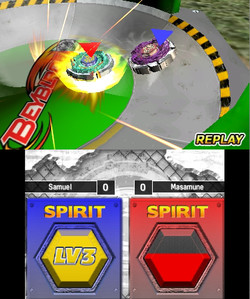
It's a tense battle!
There's a bit of strategy involved along the way, with different arenas having different properties and each Beyblade belonging to a certain category (defence, attack and so on). Choosing the right Beyblade for the right arena is key to success, as is paying attention to opponents' spinners. In practice though, it's really just a case of flinging your Beyblade into the arena and hoping for the best. Once the battle's begun, all you can do to influence the outcome is make use of your 'Bey Spirit', which is a special move that can give your blade an extra boost of power. It's important to aim carefully though, as it's possible to inadvertently power up your opponent should your shot go amiss. If you manage to knock the other Beyblade out of the arena (or if you're the last top standing when the time's up) you'll emerge victorious, and rack up some Bey points to spend on upgrades too.
While the story mode does a good job of bringing new players up to speed, unfortunately it makes for a very linear experience. It all feels very restrictive, as you're not free to explore on your own and are told where you have to go next and when. Once you've taken part in the first stadium match though, things do loosen up a bit, and then you're then able to seek out opponents, play motion-controlled mini-games and generally feel a bit more in control of things. This is where the customisation aspect of the game comes in to play, although despite a huge choice of custom pieces on offer to customise your spinner, it's not particularly interesting or exciting to do. As it stands, only the most dedicated Beyblade fans will want to delve into the customisation options as most (particularly younger players) will probably be content with the default setup.
Aside from the story mode, there's a battle mode to dig into here too, which lets two real-life players compete against each other using their customised Beyblades in a wireless battle. Despite the added fun of battling
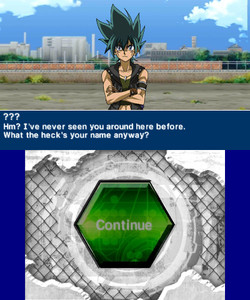
That's a good question.
friends, the basic gameplay remains the same as the main game, though: aim, launch, use Bey Spirit, cross fingers, and as such it's unlikely to keep any but the most hardcore bladers occupied for long.
For a fairly simple title, Evolution's an appealing-looking game. Everything looks sharp and clear, and the cartoon characters, while represented by static pictures, are in keeping with their anime counterparts so fans of the series should be pleased to see appearances by familiar faces. The 3DS' stereoscopic 3D effect is best left off though, as when combined with the motion controls required to launch the spinners, it's almost impossible to use. We'd take accuracy over added 3D depth any day. The 3D effect is nice enough in static scenes, providing a nice layered effect, but there's not an awful lot lost by turning it off.
In all, then, Beyblade Evolution is one for the fans. While it may draw in others who haven't played with the toys, this is a game that'll only really hugely appeal to children who are already up to speed with the world of Beyblade. The game does a pretty good job of recreating the fun of sending real Beyblade spinners into battle, but even the most enthusiastic Beyblade aficionados might find the repetitive gameplay too much to hold their interest for too long.
Format Reviewed: Nintendo 3DS


